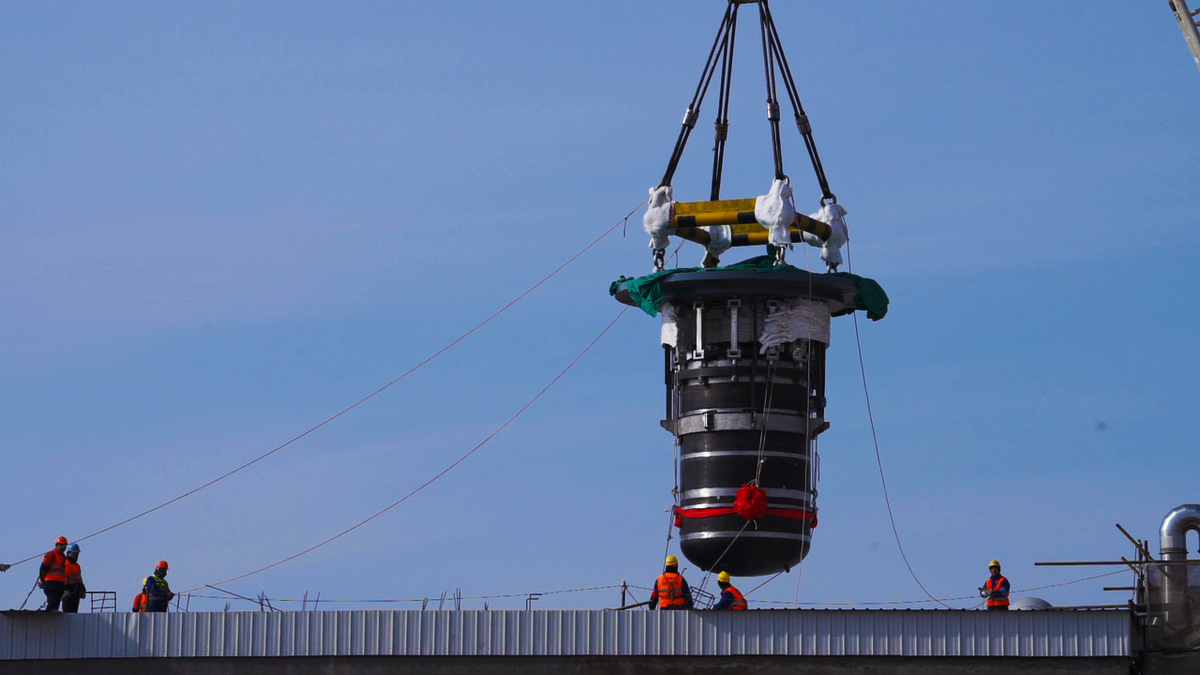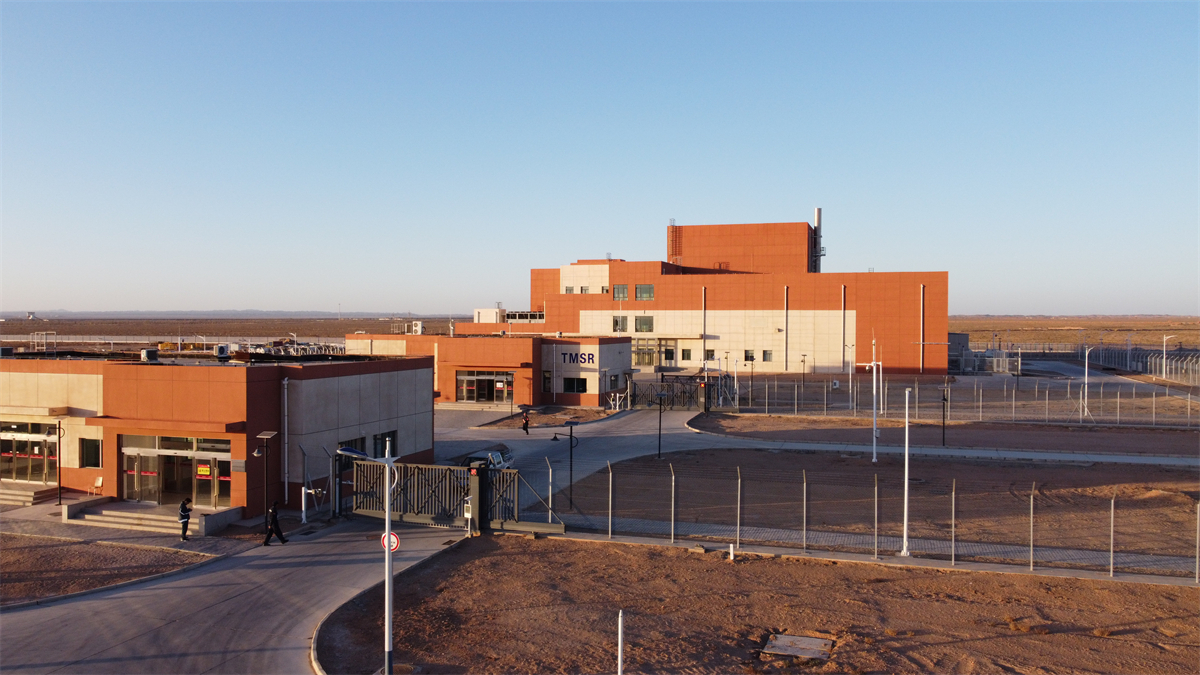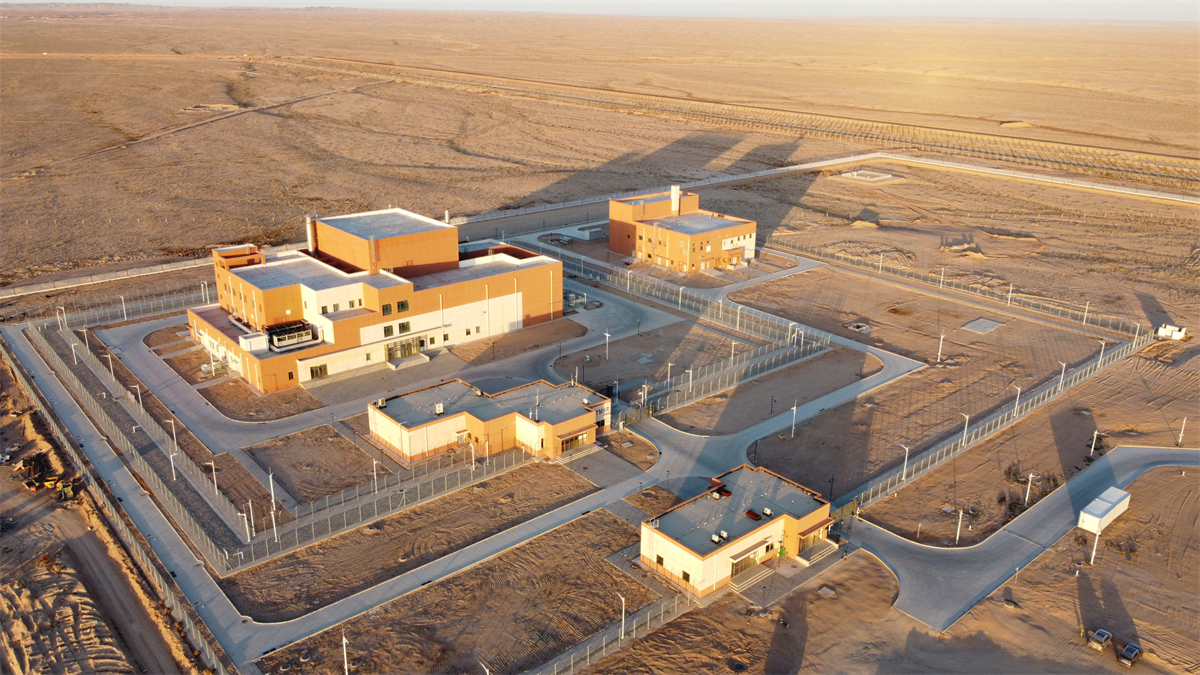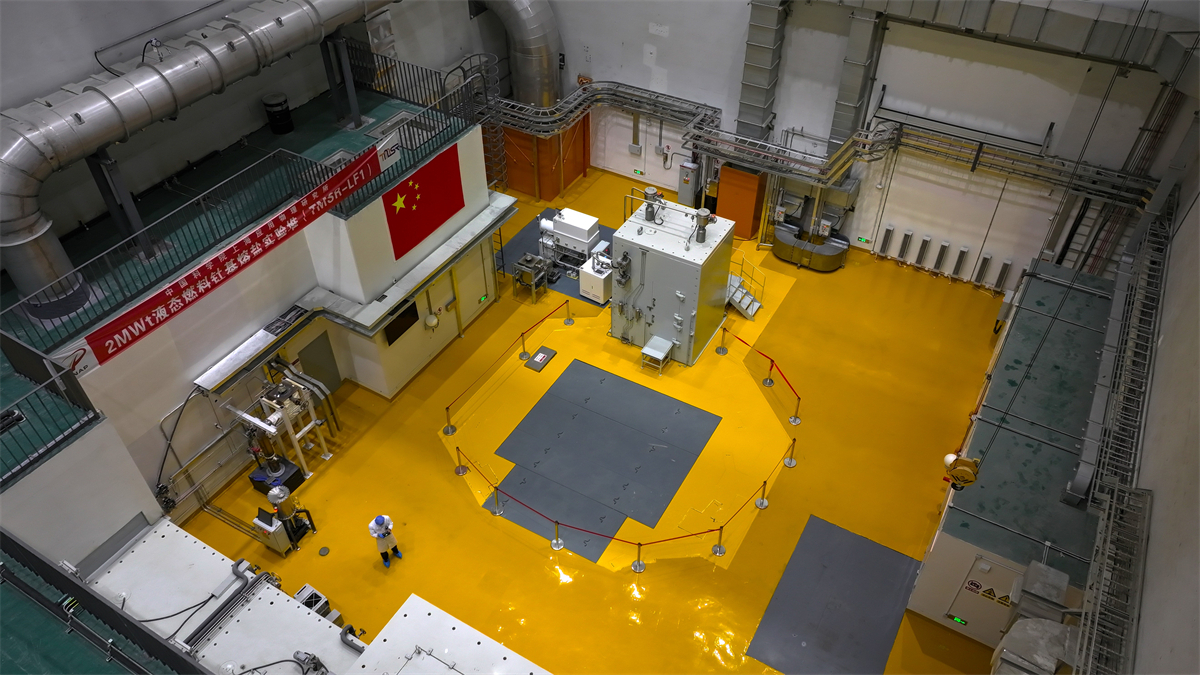钍基熔盐堆核能系统系列宣传报道
中国日报:China achieves 1st thorium-to-uranium fuel conversion in molten salt reactor

The core vessel of the thorium molten salt reactor is hoisted in Wuwei, Gansu province. [Photo provided to chinadaily.com.cn]
China's thorium molten salt reactor has achieved the world's first transmutation of thorium fuel into uranium fuel for nuclear fission, making it the world's first operational reactor to accomplish this feat.
Key physical parameter data of protactinium-233 confirm the successful establishment of a nuclide conversion chain from thorium-232 to uranium-233 within the reactor. This milestone offers preliminary verification of the technical feasibility of the thorium fuel cycle, solidifying China's lead in molten salt reactor research.
The achievement stems from a 2-megawatt thermal (MWt) liquid-fueled thorium molten salt reactor, led by the Shanghai Institute of Applied Physics of the Chinese Academy of Sciences, located in the Hongshagang industrial cluster in Minqin county, Wuwei city, Gansu province.
"Nuclear energy, characterized by its high energy density, near-zero carbon emissions and independence from seasonal variations, is a clean, low-carbon, safe and efficient energy source. It plays a crucial role in safeguarding energy security and advancing large-scale commercialization goals," said Cai Xiangzhou, deputy director of the Shanghai Institute of Applied Physics.

Cai highlighted that China has witnessed steady growth in newly installed nuclear power capacity. However, the country faces sustainability challenges due to its heavy reliance on imported uranium — the most widely used nuclear fuel. This underscores the critical importance of a stable nuclear fuel supply for sustainable development.
Dai Zhimin, director of the Shanghai Institute of Applied Physics, emphasized thorium fuel's advantages over uranium, "China's abundant thorium reserves and its negative temperature coefficient of reactivity, which effectively mitigates the risks of radioactive release. In addition, thorium-fueled reactors generate spent fuel with reduced volume and shorter radioactive half-lives, significantly simplifying waste disposal processes."
"As a fourth-generation nuclear power reactor type, molten salt reactors use high-temperature molten salt as a coolant. Endowed with inherent safety features, water-free cooling, low-pressure operation and high-temperature output, they are internationally recognized as the most suitable reactor type for thorium resource utilization," Dai said.

He added that the technology enables deep integration with multiple industries such as solar energy, wind power, high-temperature molten salt energy storage, high-temperature hydrogen production, and coal, oil and gas chemical engineering. This integration provides strong support for the development of a multi-energy, complementary and low-carbon hybrid energy system.
To meet national strategic goals for energy security and sustainable development, the Chinese Academy of Sciences launched a program in 2011 to enhance core technological capabilities and develop a thorium-based molten salt reactor system.

Construction commenced in 2020, and equipment installation concluded in 2022. By June last year, the reactor reached full-power operation at 650 C and in September, it received the world's first experimental license to load thorium fuel into a molten salt reactor. The first thorium loading was successfully completed in October last year, establishing the world's only research platform dedicated to molten salt reactors and thorium-uranium fuel cycle studies.
"The program brought together nearly 100 domestic research institutions, universities and industrial companies. The collaborative team overcame key challenges in reactor design, critical material and equipment development, installation and commissioning, and reactor safety," Cai said.
Cai emphasized that the team had pioneered technologies for controlling oxygen content in thorium fluoride and established a preparation process for nuclear-grade thorium-based fuel salt.

"Over 90 percent of the reactor's components are domestically produced, with 100 percent localization of key parts and a fully independent supply chain. This achievement marks the initial establishment of an industrial ecosystem for thorium molten salt reactor technologies in China," he added.
Dai said: "The Shanghai Institute of Applied Physics will collaborate with leading energy enterprises, including the State Power Investment Corporation, to build a comprehensive industrial and supply chain ecosystem for the thorium molten salt reactors."
"Our goal is to complete the construction and demonstration of a 100-MWt prototype by 2035 and realize commercial-scale application. This will accelerate technological innovation and engineering transformation, ultimately providing China with a safe, reliable and domestically controlled thorium-based energy generation solution," Dai added.
